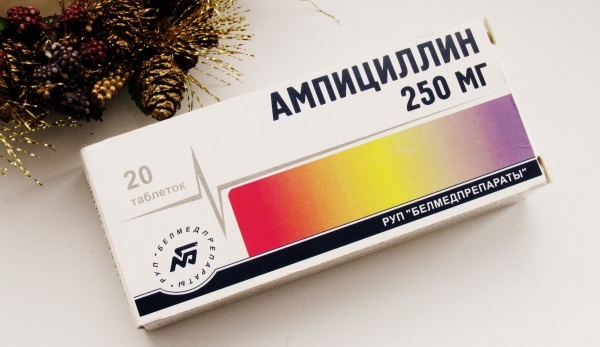Doxycycline is a broad-spectrum bacteriostatic drug that belongs to the semi-synthetic antibiotics of the tetracycline series. When bitten by a tick It is prescribed for the treatment and prevention of infectious diseases carried by blood-sucking insects of this species.
Record content:
- 1 Indications for use
- 2 Compound
- 3 In what form is it produced
- 4 Pharmodynamics
- 5 Pharmacokinetics
-
6 Application
- 6.1 For children under 18
- 6.2 For adults
- 6.3 For pregnant
- 6.4 For the elderly
- 7 Contraindications
- 8 Overdose
- 9 Side effects
- 10 Drug interactions
- 11 Storage conditions and periods
- 12 Conditions of dispensing from pharmacies
- 13 Analogs
- 14 Video about Doxycycline
Indications for use
Doxycycline is an antibacterial drug, the main property of which is the destruction of infectious microorganisms sensitive to its active substance doxycycline hyclate.
Due to the bacteriostatic effect, the drug has an anti-inflammatory effect, promotes faster recovery of tissues damaged by a bacterial infection. With a tick bite, the medication is indicated for use for the treatment of the following diseases, which are carried by these parasites.
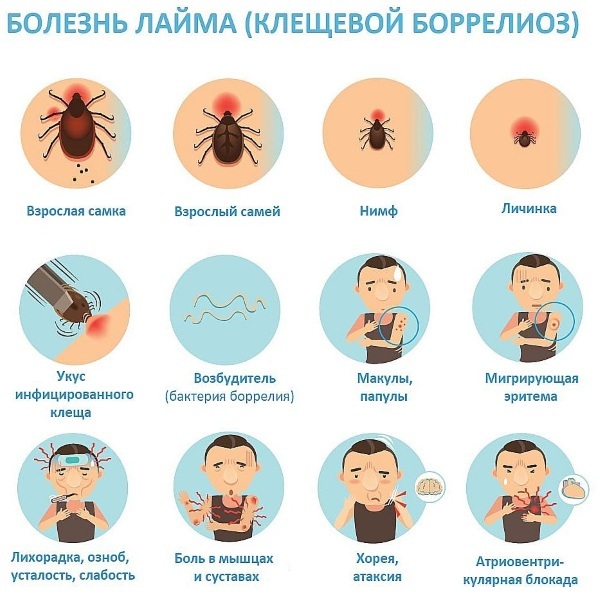
| Name of the disease | Characteristics of the disease |
| Tularemia | It is an infectious disease caused by the gram-negative bacterium Franciscela tularemis. The development of the disease is characterized by signs of acute intoxication of the body, ulcerative lesions of the skin, extensive lymphadenitis. |
| Blue disease | The full name of this disease is Rocky Mountain Spotted Fever. It is caused by infectious microorganisms rickettsiae, the main carrier of which is a dermacentor mite. The lethality of the disease is 5-8%. |
| Typhus | The causative agent of this disease is also a type of infectious microorganism rickettsia. The disease is characterized by bacterial damage to the nervous and cardiovascular systems. |
| Relapsing fever | The main vector of this disease is ticks. The causative agent of relapsing fever are infectious microorganisms from the type of Borrelia, which are sensitive to the active component of Doxycycline. |
| Babesiosis | Severe invasive disease caused by babesia. These are the simplest intracellular parasites that enter the human body along with the tick's saliva. They parasitize and multiply inside red blood cells, gradually destroying vital blood cells. |
| Vesicular rickettsiosis | This disease is caused by a type of infectious microorganism from the type of rickettsia, which is spread by ticks. It is successfully treated with Doxycycline. |
| Ehrlichiosis | The causative agent of this disease is the bacteria Ehrlichia. The disease is characterized by fever, intoxication of the body, damage to the nervous system. In this case, Doxycycline is used not only for the treatment of ehrlichiosis, but also for the prevention of the disease. |
| Lyme disease | This disease is also known as tick-borne borreliosis, and its causative agent is the bacterial microorganism borrelia. |
| Marseilles fever | The disease belongs to the category of tick-borne rickettsioses. The carrier of the infection is the dog tick. The disease is always acute. It is accompanied by chills, high body temperature, rash, intoxication of the body. |

Doxycycline is prescribed for admission to patients who have already identified an infectious disease transmitted by ticks. Therapeutic courses are used with an optimally selected dosage and duration of treatment. People who have been in the wild and have been bitten by a blood-sucking parasite can take a single dose of Doxycycline to prevent infection.
The drug suppresses the incubation period of pathogenic microorganisms, supporting the immune system in the fight against foreign biological agents.
Also, the medication can be used to treat the following diseases of bacterial etiology:
- cholera;
- shigellosis;
- amoebic dysentery;
- gastroenteritis;
- actinomycosis;
- leptospirosis;
- gonococcal infection;
- chlamydia;
- trachoma;
- otitis media;
- unspecified syphilis;
- chronic and acute sinusitis;
- tonsillitis;
- proctitis;
- cholecystitis;
- urethritis;
- cystitis;
- bacterial prostatitis;
- gynecological diseases;
- infection of burns and wound surfaces;
- orchitis.
Doxycycline can be prescribed by the attending physician in the postoperative period of recovery and healing of the skin surface, soft tissues and internal organs. These measures are taken to prevent complications of bacterial infection.
Compound
Doxycycline, when bitten by a tick, is an effective antibacterial agent that prevents the body from infecting the body with dangerous infections. The composition of the drug contains the following active and auxiliary components.
| Components of the medication | Pharmacological properties |
| Doxycycline Hyclate | This is the active substance of the drug, which has antibacterial and bacteriostatic properties. 1 capsule of the medication contains 100 mg of the main component. It is a semi-synthetic product of a biochemical reaction and a tetracycline derivative. An antibacterial substance is obtained from oxytetracycline. |
| Lactose monohydrate | An excipient that is part of the capsule of the drug. After entering the human intestine, it completely dissolves, releasing the active component of the drug. It is contraindicated in patients who have individual lactose intolerance. |
| Calcium stearate | Auxiliary component, which is also part of the capsule shell. Makes them harder, protects against mechanical damage and deformation. |
| E110 dye | It is a food pigment also known as Sunset Sunset. It is used as an excipient that colors the capsules yellow. It is completely safe for the human body. |
Despite the simple biochemical composition of Doxycycline, the drug belongs to the category of potent antibiotics that suppress the pathogenic activity of most microorganisms.
In what form is it produced
Doxycycline with a tick bite is an effective drug in the treatment and prevention of infectious diseases. The main form of release of the medication is capsules of light yellow color and oblong shape, inside of which there is a white powder. The medication is packed in transparent plastic blisters and packaging made of thick cardboard.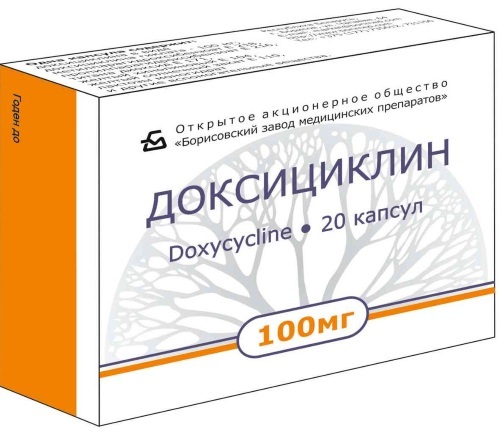
Each pack of Doxycycline contains 10 capsules of the drug. The average cost of a drug in retail pharmacy chains is 45 rubles. per packing. Inside each pack of capsules contains detailed instructions for the use of the medication.
Pharmodynamics
The bacteriostatic properties of Doxycycline are due to the fact that its active substance inhibits the protein synthesis of infectious agents. The drug disrupts the bonds of RNA molecules that carry out a transport function with informational ribosomes.
As a result of this process, pathogenic microorganisms lose their functional ability to divide and increase their population.
The main pharmacodynamic property of Doxycycline is its high activity against bacteria of the following strains:
- Staphylococcus aureus;
- streptococcus;
- clostridium;
- gonococcus;
- Escherichia koli;
- shigella;
- salmonella;
- enterobacter;
- chlamydia;
- mycoplasma;
- rickettsia.

The appointment of Doxycycline is carried out only after a specific strain of an infectious microorganism has been identified, which is sensitive to the active substance of the drug.
Pharmacokinetics
Doxycycline for a tick bite is most effective if it is taken in the first 1-2 days after an attack by a blood-sucking parasite. This minimizes the risk of contracting the body with dangerous infections. After taking the Doxycycline capsule and dissolving its protective shell, the active substance of the drug is released.
The drug is rapidly absorbed into the intestinal wall, saturating the bloodstream. Doxycycline is characterized by rapid absorption and a slow elimination process. This is a distinctive feature of this medication among all tetracycline antibiotics.
The active substance Doxycycline binds 80-90% to serum proteins and is quickly distributed among all body fluids. The simultaneous intake of food or drinking of various drinks does not affect the degree of absorption of the drug.
Depending on the dosage of the drug, its therapeutic concentration remains in the blood for 18-24 hours. The concentration of Doxycycline in the cerebrospinal fluid is 10-25%. The metabolism of the drug occurs in the liver tissues.
The half-life of the active and auxiliary substances of the drug varies from 12 to 22 hours, depending on the therapeutic dose that was taken the day before. About 60% of the drug is utilized from the body as part of the feces.
Another 40% of the constituents of Doxycycline are excreted by the kidneys along with the urine. During the half-life of the antibiotic, an additional load on the liver and kidney tissues is created on metabolites. This pharmacokinetic feature of Doxycycline should be taken into account in people who suffer from chronic diseases of these organs.
Application
Doxycycline with a tick bite is used as the main antibacterial agent, as well as in combination with other medicines of the bacteriostatic spectrum of action. The drug is indicated for use in children, adults and the elderly.
For children under 18
The drug Doxycycline is prescribed for children who have reached the age of 12 years, and also have a total body weight of at least 45 kg. This is a prerequisite for therapy with this antibacterial agent. A child who has been bitten by a tick takes Doxycycline 1 capsule 1-2 times a day.
The maximum daily dosage of the drug is no more than 200 mg. In order to prevent the development of diseases spread by ticks, antibiotic therapy is prescribed for 2-3 days. The full course of treatment is determined by an infectious disease doctor, but on average it is at least 10 days.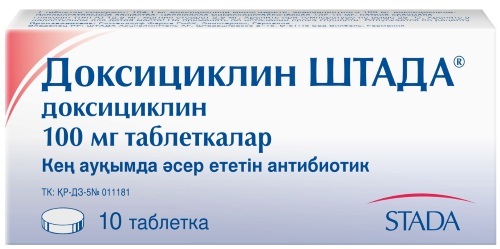
The child should take the capsules with or after meals. Swallowing the drug must be performed when the body is completely upright. This minimizes the risk of the capsule getting stuck in the esophagus and irritating its mucous membrane.
The medication should be taken no later than 2 hours before the child goes to bed. Compliance with this rule will avoid the development of adverse reactions from the organs of the digestive system.
For adults
Patients in the adult age category take Doxycycline 1-2 capsules 2 times a day during or immediately after meals. The duration of treatment is on average 10-14 days.
After the complete disappearance of the symptoms of an infectious disease and the appearance of signs of recovery, it is necessary to continue taking Doxycycline for another 2 days. This will allow achieving a stable therapeutic effect and preventing the development of a relapse of the disease.
For pregnant
Doxycycline is not used to treat women who are pregnant. This is due to the fact that the active substance of the medication penetrates the placental barrier and enters the fetal tissue.
The negative effect of the drug lies in the disruption of the process of formation of the skeleton of the child, as well as fatty infiltration of the liver. There is a high likelihood of a baby being born with defects in bone development and systemic dysfunction of hepatocytes.
For the elderly
Patients in the elderly age group take Doxycycline in a standard dosage, like all other adults. Drug therapy in compliance with a maximum daily dose of 200 mg of the drug does not cause irritation of the esophagus, intestines and does not impair renal function.
The average duration of a therapeutic course is determined by the attending physician, but on average is at least 10 days.
Contraindications
Doxycycline is categorically contraindicated for use in patients who have the following diseases of the body:
- porphyria;
- severe form of liver failure (taking medication will exacerbate the disease);
- leukopenia;
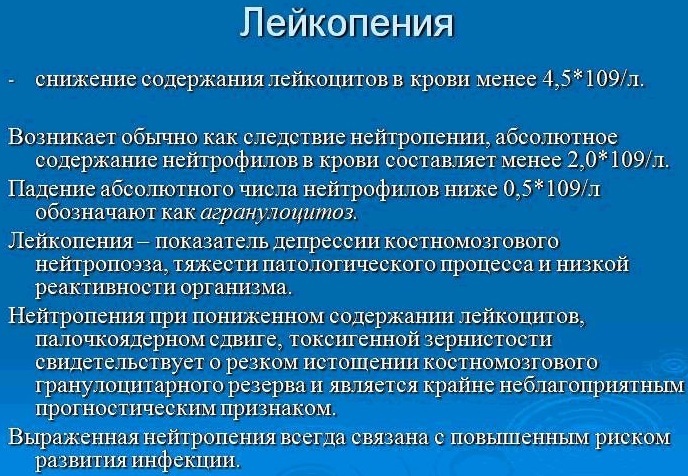
- a tendency to manifest an allergic reaction to antibacterial agents from the tetracyclines group (may appear in the form of red or pink rash, itching of the skin surface, edema of epithelial tissues and mucous membrane of the larynx, urticaria, bronchial spasm).
Doxycycline is contraindicated for women who are pregnant. The active components of the drug penetrate into breast milk and the baby's body. There is a violation of the development of his bone tissue and teeth. Children who have reached the age of 12, but their body weight is less than 45 kg, also cannot take an antibacterial agent.
Overdose
During an overdose of Doxycycline, signs of acute intoxication of the body develop.
The patient may have the following symptoms:
- nausea and vomiting;
- Strong headache;
- an upset bowel movement, which is most often accompanied by diarrhea;
- physical weakness;
- pain in the stomach and right hypochondrium;
- yellowness of the skin (develops as a result of a critical load on the liver tissue);
- loss of consciousness, if a large amount of the drug was deliberately used and the patient has severe drug poisoning of the body;
- manifestation of various kinds of allergic reactions.
Doxycycline overdose therapy is symptomatic. Blood purification by hemodialysis is ineffective. The patient is prescribed sorbents for taking medications, gastric lavage is performed, droppers with glucose and saline are prescribed to replenish lost fluid.
Side effects
Doxycycline is a drug that is well tolerated by patients of all age groups.
Despite this, there is always a risk of developing the following adverse reactions:
- increased bilirubin levels;
- discharge of vomit;
- nausea;
- glossitis;
- diarrhea;
- hemolytic anemia;
- intestinal dysbiosis;
- allergic reactions in the form of itching of the skin, the appearance of a red rash, urticaria (the most severe manifestation of an individual intolerance to the drug is Quincke's edema and anaphylactic shock, which can lead to the onset of fatal outcome);
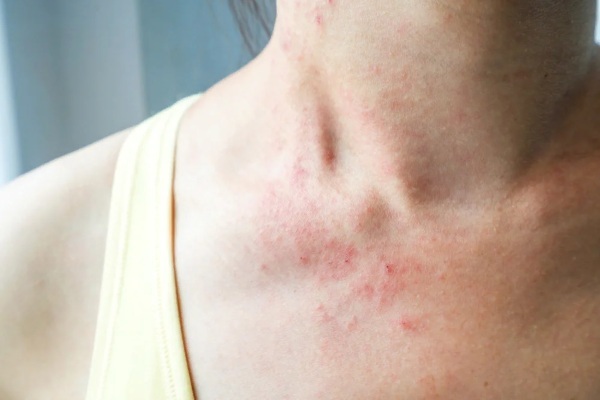
- acute form of thrombocytopenia;
- discoloration of teeth that turn gray (this side effect is most common in children);
- blood pressure surges;
- candidiasis;
- an increase in the concentration of residual nitrogen in the blood;
- eosinophilia;
- neutropinia;
- loss of appetite;
- a rapid decrease in body weight anorexia (occur with prolonged antibiotic therapy);
- constipation;
- attacks of acute pain in the stomach and intestines.
In case of side effects, you must immediately stop further taking the drug, and also inform your doctor about it.
Drug interactions
It is recommended to avoid the simultaneous administration of Doxycycline with drugs of the following categories and types:
- containing in their composition calcium, potassium, magnesium, iron compounds and other minerals in order to avoid the formation of inactive chelates;
- barbiturates (with joint therapy, the level of Doxycycline decreases in the patient's blood);
- medicines of the penicillin and cephalosporin series, since they are antagonists of the bacteriostatic Doxycycline;
- containing retinol (there is a risk of increased intracranial pressure);
- oral contraceptives (Doxycycline reduces the effect of these drugs).

Patients who are prescribed antibiotic therapy should inform their doctor that they are taking other medications in parallel.
Storage conditions and periods
Doxycycline should be stored out of the reach of children with an air temperature not exceeding +25 degrees Celsius. Do not allow direct sunlight to fall on the surface of the package of the medicinal product. The shelf life of the drug is 3 years, after which it is prohibited to take the drug.
Conditions of dispensing from pharmacies
Doxycycline can be purchased from retail drugstores, but only with a prescription from your healthcare provider.
Analogs
Doxycycline analog drugs, which can be used as prevention and treatment of diseases, transmitted by a tick bite, are the following medications:
- Bassado - is available in the form of capsules, which must be taken 1 pc. 2 times a day for 7 days;
-
Vibracin-D - a broad-spectrum antibiotic, which is prescribed for taking 1 tablet 2 times a day for 7-10 days;

- Doxibene - a potent antibacterial agent of the tetracycline series, which is indicated to take 1 capsule 2 times a day with a course of treatment for 1-2 weeks;
- Monoclin - a semi-synthetic antibiotic, which is produced on the basis of tetracycline (indicated for taking 1 tablet 2 times a day for 7-10 days);
- Rickdocks - a potent antibacterial drug, which is prescribed for daily intake of 1 capsule 2 times a day (the course of treatment is 1-2 weeks);
- Xedocin - a semi-synthetic antibiotic, the active component of which is doxycycline monohydrate with a concentration 100 and 200 mg (medication is taken 1 capsule 1-2 times a day, depending on the dosage of the drug funds).
Doxycycline is a potent antibacterial drug of the tetracycline group that has a bacteriostatic effect. The medication is prescribed for the prevention and complex treatment of diseases that are transmitted by a tick bite.
Drug therapy should begin no later than 72 hours after contact with a blood-sucking parasite. Doxycycline has a number of side effects that you need to be aware of before starting treatment with the drug.
Article design: Vladimir the Great
Video about Doxycycline
Doctor's opinion about the drug Doxycycline:



